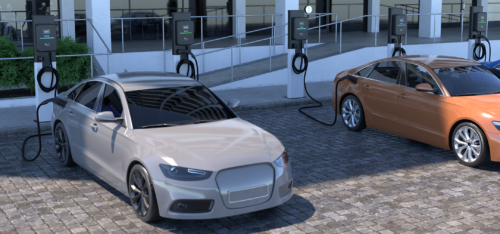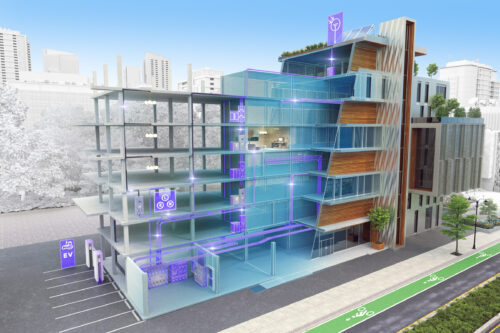Your questions answered: How to design microgrids and microgrid controls for small and medium sites
Engineers involved in designing and specifying electrical systems for small and medium facilities (less than 1 megawatt) will learn about design considerations and customer applications associated with microgrid controls
Many key market trends are driving faster adoption of microgrids and “microgrid-ready” facilities incorporating a variety of renewable energy resources like solar photovoltaics, battery storage, electric vehicle charging, etc. Designing power delivery systems with these capabilities is generally perceived to be very customized, design-intensive and associated with long deployment times. However, modern technologies incorporating controllers and pretested software allow for the fast deployment of “packaged” microgrid controls at scale.
Several questions were posted during the June 22, 2021, webcast “How to design microgrids and microgrid controls for small and medium sites.” Those the presenter wasn’t able to answer are covered here. The expert is: Ram Kaushik, U.S. Offer Manager, Digital Power Division, Schneider Electric.
How easy is it to modify the automatically generated code when the system changes after deployment?
Ram Kaushik: Depends on the type of change. If it is items like thresholds, limits and other “configurable” items, then it is much easier. More radical changes like adding different distribute energy resources, changing switching sequences etc. may be trickier and will involve regression testing with the control code.
Between greenfield and brownfield configuration, which on is the most efficient and economical?
Ram Kaushik: Designing a “microgrid-ready” facility right from the beginning during greenfield design makes the most sense. Retrofitting in a brownfield is possible but perhaps a little harder since we have to account for the existing electrical infrastructure, manage outages for retrofitting, etc.
Upper limits of pre-engineered control systems?
Ram Kaushik: Difficult to put hard limits since it has more to do with how standardized you can get the specifications i.e., do you have to go way out of the “guard-rails” or not. But rule of thumb — over about 2MW or so, we start seeing more customized requirements.
For this pre-engineered microgrid, what happens if there are changes or additions to the microgrid or change of use cases?
Ram Kaushik: The “pre-engineered” recipes essentially covers the 90% case. The local control code can always be tuned per specific requirements or any change in requirements. The intent here is to not approach every microgrid as a “new” project that requires detailed custom engineering and slow deployment.
For health care facilities subject to NFPA 99 and CMS mandate for Emergency Preparedness Rule, are microgrids/DERs an acceptable method of compliance and allow reducing number of days of on-site fuel storage for backup generation?
Ram Kaushik: Codes in this area are evolving and eligibility for Medicare/Medicaid reimbursements are being looked at. See OSHPD’s white paper for details.
In the health care design example, the photovoltaic and battery are on the normal side of the automatic transfer switch. Can you explain how they reduce the generator load in this case?
Ram Kaushik: When the grid is up, we get energy cost savings and carbon reduction from DERs. If the grid goes down, then we can get *additional resilience* for the previously uncovered normal loads using a cleaner mix than diesel. Also, when islanded, if we have excess capacity on microgrid side, we can manually (or automatically if the controls are smart) transfer loads from the diesels to the microgrid, so that some of the diesels can be shut down.
Regarding microgrid management layering (Slide 37 of 53), does the processing of midlevel decisions occur on edge equipment, or are all decisions made in the cloud?
Ram Kaushik: It’s a blend of both cloud and edge. Operational decisions (tripping of breakers for load balancing, islanding/restoration) will be done on edge equipment typically for speed of response and reliability. Optimization algorithms typically run on the cloud and deliver “recipes” to the local control system.
The pre-engineered microgrid is just the controller?
Ram Kaushik: No. Pre-engineered recipes are both control sequences delivered to the controller, plus any configuration associated with optimizing for economics ,e.g., we can bake in the thresholds for demand charges such that we optimally run PV to avoid hitting peaks. This is implemented in the cloud interacting with the local controller.
Does the use of renewable energy necessarily imply the usage of microgrid?
Ram Kaushik: Per the Department of Energy definition the key is operating autonomously. Meaning if you can’t or don’t want to control the combination of DERs as a coherent entity or you simply use manual switching sequences, the definition probably doesn’t apply. But beauty is in the eye of the beholder.
What exactly is that ECC you referenced?
Ram Kaushik: ECC = energy control center (resources slide has a link).
What are the platforms (software) used to develop the remote monitoring system?
Ram Kaushik: The software platforms we use are typically Ecostruxure Microgrid Operation (edge software) and Ecostruxure Microgrid Advisor (optimization on the cloud)
Are there concerns about using the cloud for control and optimization?
Ram Kaushik: We typically use the cloud technology for the optimization use cases and to send control limits down to the edge level. That way, if communications is disrupted, controls can work per the last recipes. That being said, we always want to keep cybersecurity considerations front and center when planning these designs and customers approach cloud connectivity with varying degrees of comfort.
Are the prepackaged solutions available in a modular fashion, i.e., can we deploy one source of power or storage and add source or storage in a modular fashion later?
Ram Kaushik: Yes, absolutely. Many DER vendors now allow for this sort of modular deployment.
Do you have experience and expertise with the topics mentioned in this content? You should consider contributing to our CFE Media editorial team and getting the recognition you and your company deserve. Click here to start this process.






